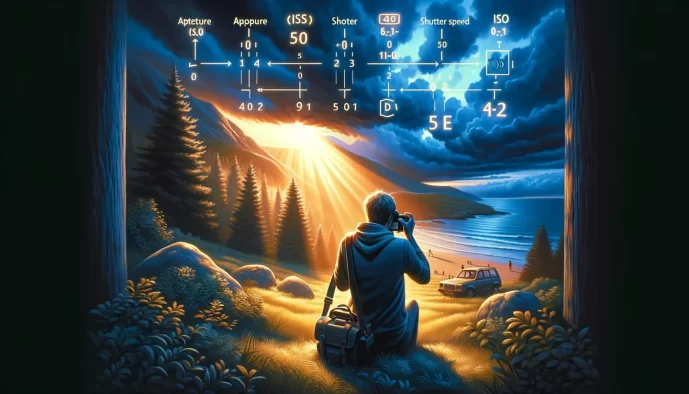Understanding Exposure
Unlock the secrets of perfect photos by mastering aperture, shutter speed, and ISO settings.

Understanding Exposure
The Basics of Exposure
In photography, exposure is the amount of light that reaches the camera’s sensor, dictating the brightness of an image. It’s a fundamental concept that can make or break a photograph.
The Exposure Triangle
The exposure triangle consists of aperture, shutter speed, and ISO. These three elements work in tandem to achieve a balanced exposure. Altering one requires adjustments to the others to maintain the desired exposure level.
Aperture
The Role of Aperture in Exposure
Aperture refers to the opening in a lens through which light passes. It’s measured in f-stops. A lower f-stop means a larger aperture, allowing more light to hit the sensor. Conversely, a higher f-stop indicates a smaller aperture and less light.
Creative Uses of Aperture
A wide aperture (low f-stop) yields a shallow depth of field, artistically blurring the background. This is ideal for portraits or emphasizing a subject. A small aperture (high f-stop) extends the depth of field, keeping more of the scene in focus, which is excellent for landscapes.
Shutter Speed
How Shutter Speed Affects Exposure
Shutter speed determines how long the camera’s shutter remains open. A fast shutter speed lets in less light but freezes action, while a slow shutter speed allows more light but can introduce motion blur.
Shutter Speed for Motion
For capturing movement, a fast shutter speed can freeze the subject, whereas a slow shutter can create a sense of motion. Experimenting with shutter speed can lead to dynamic images, such as silky waterfalls or crisp sports shots.
ISO
ISO’s Impact on Exposure
ISO measures the sensor’s sensitivity to light. A lower ISO means less sensitivity and a finer grain, suitable for well-lit conditions. A higher ISO increases sensitivity, allowing for shooting in low light without a flash.
Managing Noise with ISO
While high ISO can brighten an image, it also introduces noise, which deteriorates image quality. Striking a balance between exposure and acceptable noise levels is critical, especially in digital photography.
Metering Modes
Different Metering Modes Explained
Metering modes determine how the camera measures the light. Spot metering assesses a small area, center-weighted metering prioritizes the center, and evaluative/matrix metering considers the entire scene. Choose based on the lighting distribution and subject.
When to Use Each Metering Mode
Use spot metering for high-contrast scenes, center-weighted for portraits, and evaluative for even lighting. Understanding these can prevent poorly exposed shots caused by tricky lighting.
Exposure Compensation
Adjusting Exposure in Camera
Exposure compensation allows photographers to override the camera’s automatic settings. This tool can brighten or darken an image without changing the chosen aperture, shutter speed, or ISO.
Real World Applications
In scenarios where the camera’s meter may be fooled, such as a snow-covered landscape or a backlit subject, exposure compensation can be a lifesaver for achieving the correct exposure.
Practice Tips
Experimenting with Different Settings
The best way to master exposure is through practice. Change one element of the exposure triangle at a time and observe how it affects the image. This hands-on experience is invaluable.
Learning from Common Exposure Mistakes
Overexposure and underexposure are common pitfalls. Reviewing and adjusting images with exposure issues teaches you to anticipate and mitigate these mistakes in the future.
In mastering exposure, remember that rules are more like guidelines. Sometimes, a technically incorrect exposure can yield a visually stunning result. Embrace the unpredictability of photography and let your creativity flourish.